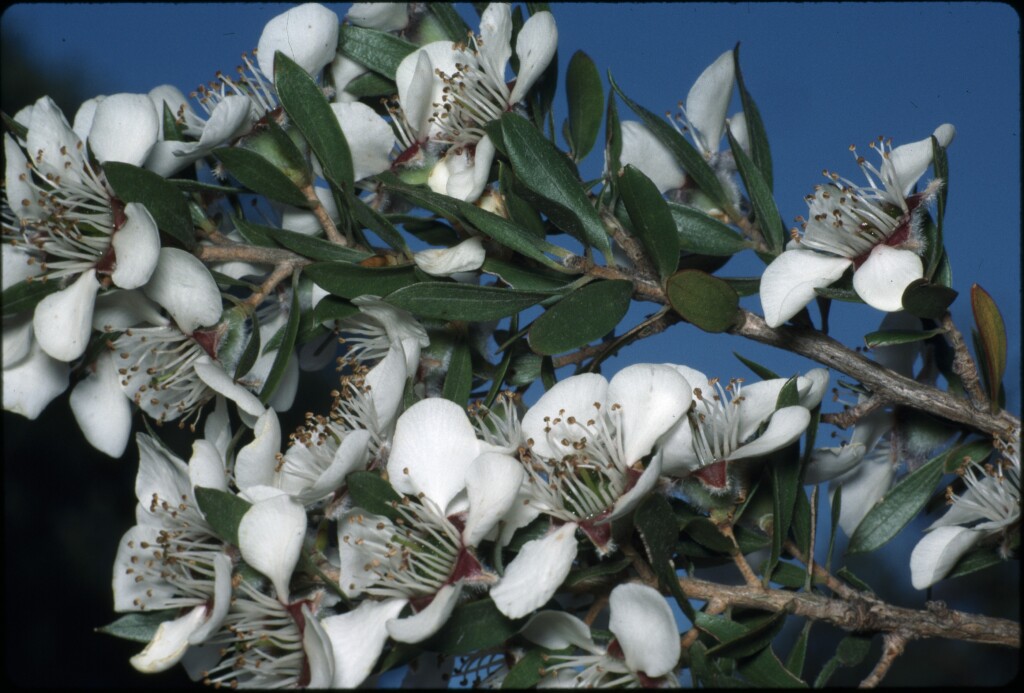Leptospermum lanigerum
(Aiton) Sm. Woolly TeatreeShrub or tree to 4 m high; bark on smaller stems smooth, in eastern forms shedding in stringy strips; on larger stems fibrous, persistent. Leaves linear or narrowly elliptic to narrowly obovate, 4–20 mm long, 1.5–4 mm wide, silky on both surfaces and with a silvery sheen, or glabrous (in far western form) or glabrous on upper surface and silky on lower surface, usually spreading; apex acute to acuminate, flat or incurved or recurved; margins flat to recurved. Flowers c. 15 mm diam.; hypanthium 3–5 mm long, villous, sessile; sepals narrowly triangular to triangular, 3–5 mm long, acute, villous on outer surface, persisting on fruit; petals c. 6 mm long, white; ovary 5-locular, apex glabrous. Fruit broadly hemispherical, persistent, 5–8 mm diam., surface ultimately shedding in papery flakes, valves woody; seeds c. 3 mm long, with a linear-striate surface pattern. Flowers Sep.–Feb.
Wim, GleP, Brid, VVP, GipP, OtP, WaP, Gold, CVU, GGr, DunT, NIS, EGL, EGU, WPro, HSF, HNF, OtR, Strz, MonT, HFE, VAlp. Also SA, NSW, ACT, Tas. Widespread, chiefly in southern Victoria, forming thickets in lowland swamps (and depleted through clearing and draining swamps), or fringing watercourses in the foothills.
Leptospermum lanigerum is very variable in regard to leaf indumentum. Some plants from far western Victoria (e.g. Lower Glenelg and Mt Richmond National Parks, Kentbruck Heath, Portland etc.) have glabrous green leaves and lack the silky, silvery-grey leaves typical of the species further east.
Lyne, A. (1996). Leptospermum. In: Walsh, N.G.; Entwisle, T.J., Flora of Victoria Vol. 3, Dicotyledons Winteraceae to Myrtaceae, pp. 1009–1019. Inkata Press, Melbourne.
 Spinning
Spinning

